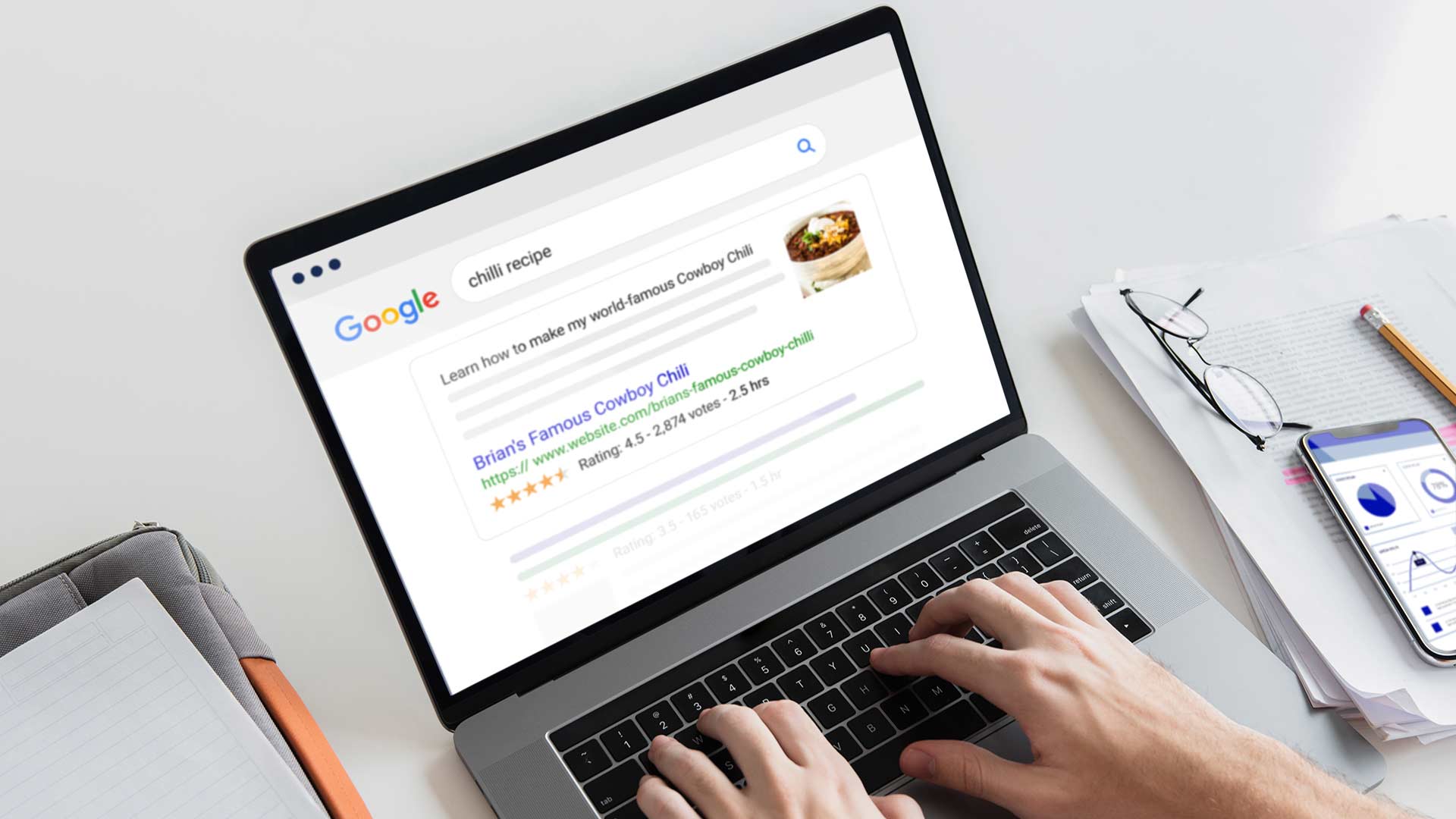Thane Kettle

If you have a fantastic-looking website, but Google search results aren’t giving it the love it deserves, the solution may come in the form of rich snippets.
Rich snippets have quickly become the secret sauce of search result supremacy yet are vastly underutilised in most SEO & content marketing strategies. As the leading digital agency in Auckland, we will walk you through what rich snippets are and how to get rich snippets for your website so you can get ahead of the SEO gold rush.
Being noticed is the first step to winning the click, and that’s precisely what rich snippets assist with. Rich snippets are the additional pieces of information nestled between the URL and description of a Google search result. Google pulls this information from the structured data markup that you can add to your webpage’s HTML. These little pieces of code sit in the background of your website and help describe the page’s relevance to the user’s searched query, allowing you to control the accuracy of your product and brand information.
While Google states that rich snippets aren’t a ranking factor, they do help cut through the noise on SERPs. Studies indicate that users are more likely to click on rich results than non-rich results.
Ranking highly in search results is fantastic, but you will need more than that to make people click on your webpage. Rich snippets help your web pages look enticing and more likely to be clicked on. Discover some of the benefits rich snippets can have on your website’s overall SEO performance.
The more information you provide, the higher the chance that searchers will pick your webpage out of the pile of results. Rich snippets are a fantastic way to cram as much information about your page into the search result, boosting your click-through rate and showing Google that users value your site.
Rich snippets create more robust listings that better express the content of your webpage. This information will help drive relevant traffic toward your page. Genuinely interested users can determine if your page is relevant to them more accurately and faster through the use of rich snippets.
The more relevant traffic you have pouring into your website, the lower your bounce rate becomes, as users better understand what your page is about before entering it. A lower bounce rate will almost always result in higher rankings on SERPs.
You can better translate conversions with appealing SERP listings that capture more relevant traffic, turning consumers into customers.
While not a direct ranking factor, rich snippets improve click-through rates and increase targeted searches, bringing in more relevant traffic. The targeted approach of rich snippets is their most overlooked benefit. While rich snippets don’t help you rank in the traditional sense, they do take advantage of the fast-paced way people are searching nowadays — not to mention Google loves it when you clearly communicate what your content is about.
To understand how to get rich snippets and where their value lies, imagine Google as the office administrator of all the world’s web pages. Filing all this information is no mean feat, and Google can use all the help it can get – which is precisely where rich snippets come in.
Getting rich snippets involves using structured data to make it easy for Google to understand the content of your page and use this information for SERPs and other purposes. Understanding how to get rich snippets involves learning about structured data and how to implement it on your page. But don’t worry if you’re not exactly a tech wiz. Structured data can be easily implemented, as you’ll discover below.
Structured data is a standardised set of filing instructions you can include in your webpage’s HTML that communicates information about the identity and purpose of your page, so Google knows exactly what your page is about. Google then extracts this data to create the rich snippets that appear under your page’s search result.
Structured data is comprised of two major components:
Depending on your webpage, there are various types of rich snippets, such as recipes, music, product, movie, and event. While each will look slightly different when generated, the end goal is the same – to enhance visibility and foster trust and authority at first glance.
If you want to incorporate rich snippets but are intimidated by structured data, don’t be. With several schema markup generators available, such as the widely used Schema.org, minimal programming knowledge is needed to start implementing rich snippets on your website.
Simply select the type of webpage on Schema.org you want to create and fill in as many fields as possible with information about the content. The JSON-LD code is automatically generated as you go. Once completed, all you need to do is copy and paste the schema markup into the HTML head tags throughout your website, and you’re good to go.
Start tapping into the SEO gold mine that is rich snippets. By implementing structured data on your website, you can increase the likelihood of searchers pulling your page out of the internet slush pile.

